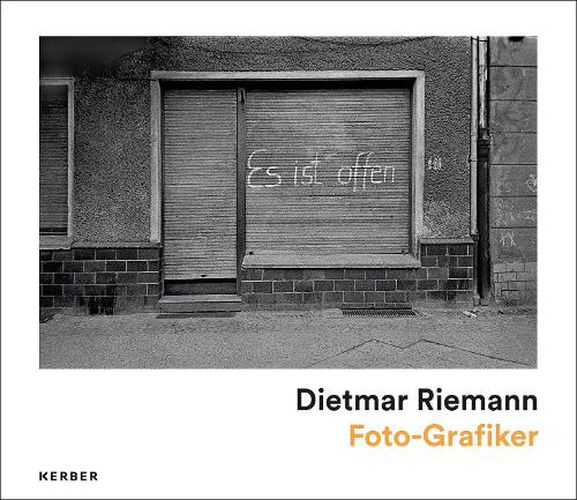Readings Newsletter
Become a Readings Member to make your shopping experience even easier.
Sign in or sign up for free!
You’re not far away from qualifying for FREE standard shipping within Australia
You’ve qualified for FREE standard shipping within Australia
The cart is loading…






Dietmar Riemann (_1950) produced his most important photographic works between 1975 and 1989 in the former GDR. In addition to insights into life in a retirement home or a home for people with mental disabilities, or the humorous record of leisure pursuits at the racetrack, his photos also document the design of public space through walls, fences, shop windows, and propaganda signs. Details of everyday life and the spatial surroundings in Riemann's social documentary photography not only convey an impression of life in the GDR, but also provide a vivid understanding of the basic conditions of human existence. Text in English and German. Dietmar Riemann (_1950) grew up in Saxony, East Germany. His apprenticeship as a photographer and his subsequent work as plant photographer at the Boxberg coal power plant were followed by a degree at the Hochschule fuer Grafik und Buchkunst in Leipzig. Riemann went on to work mainly freelance. His social documentary photographs were featured in exhibitions and published as photobooks (including What Kind of Island in What Kind of Sea, Rostock 1985 and Der gute Ort in Weissensee, Berlin 1987). In 1989, Riemann's application for an exit visa and release from GDR citizenship was approved after almost four years and he relocated to West Germany with his wife and daughter shortly before the Fall of the Berlin Wall. In 2005, he shared his experiences of that time in Laufzettel (Routing Slip: Diary of an Exit). Today, Riemann lives in Mosbach/Baden. 21 colour, 94 b/w illustrations
$9.00 standard shipping within Australia
FREE standard shipping within Australia for orders over $100.00
Express & International shipping calculated at checkout
Dietmar Riemann (_1950) produced his most important photographic works between 1975 and 1989 in the former GDR. In addition to insights into life in a retirement home or a home for people with mental disabilities, or the humorous record of leisure pursuits at the racetrack, his photos also document the design of public space through walls, fences, shop windows, and propaganda signs. Details of everyday life and the spatial surroundings in Riemann's social documentary photography not only convey an impression of life in the GDR, but also provide a vivid understanding of the basic conditions of human existence. Text in English and German. Dietmar Riemann (_1950) grew up in Saxony, East Germany. His apprenticeship as a photographer and his subsequent work as plant photographer at the Boxberg coal power plant were followed by a degree at the Hochschule fuer Grafik und Buchkunst in Leipzig. Riemann went on to work mainly freelance. His social documentary photographs were featured in exhibitions and published as photobooks (including What Kind of Island in What Kind of Sea, Rostock 1985 and Der gute Ort in Weissensee, Berlin 1987). In 1989, Riemann's application for an exit visa and release from GDR citizenship was approved after almost four years and he relocated to West Germany with his wife and daughter shortly before the Fall of the Berlin Wall. In 2005, he shared his experiences of that time in Laufzettel (Routing Slip: Diary of an Exit). Today, Riemann lives in Mosbach/Baden. 21 colour, 94 b/w illustrations